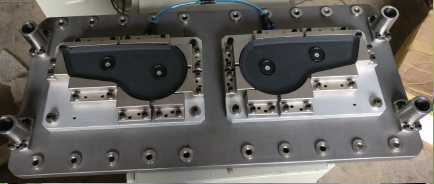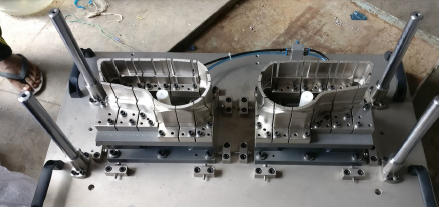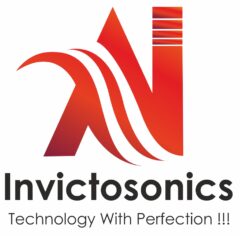Vibration Welding Fixture
Vibration Welding: How It Works
Vibration welding is a cost-effective simple process with short cycle times and only simple machines required. You can use vibration welding for a wide number of applications and is suitable for large-scale production. It is energy efficient, as it is not dependent on the expensive heating of components (as with hotplate and Infrared welding); and as it gives off almost no fumes during welding, is extremely environmentally friendly.
In this section we will take a look at the welding process itself.
The Vibration Welding Process
The principal of vibration welding is very simple. Two plastic components are held in contact under pressure and vibrated so that the edges to be welded rub together creating frictional heat. The heat generated by the friction melts the polymer where the parts join. The pressure controlled by the machine forces the melted plastic to flow away from the welding area, giving a smooth, hermetically sealed weld.
Welding Phases
As the vibration progresses, the weld takes place in four distinct phases:
- Solid Friction Phase: Heat energy is generated by friction between the connecting surfaces. The temperature rises until melting point is reached.
- Transient Phase: The increased temperature melts the polymer, creating a molten layer linking the components. As this layer increases in thickness, the temperature correspondingly decreases and the material begins flowing outward along the path of the seam.
- Steady State Melt Flow Phase: When the melt rate becomes equal to the flow rate of molten material, a steadystate is restored. Temperature becomes stable at this stage and the thickness of the weld becomes uniform. At this point the vibration is stopped.
- Cooling Phase: When the vibration stops, the flow rate of the outgoing material drops and then ceases altogether. The two components are held at a constant pressure throughout the cooling phase to ensure an even and permanent bond.
Vibrating Head Technology
The vibration head is the core of the welding machine and technology. The assembly holding the part to transfer vibrations is known as DRIVE BOX (1). This is suspended through four precision SPRINGS (2) within a steel BASE.
The base is carefully designed to ensure a correct transmission of vibrations to part, thus preventing them from being absorbed by the machine frame. ELECTROMAGNETS (3) are used for movement transmission. The linear vibration motion is achieved by feeding a given frequency to each electromagnet. A SENSOR (4) is then used to send a microprocessor real time data on the movement of the swinging unit keeping the welding amplitude constant. Due to their special design and mechanical features, the spring pack is able to ensure less than 0.01mm alignment at the end of welding. While applying vibration to one of the two parts being welded, which is rigidly fastened to the drive box, the other part which is placed on the MOVING TABLE (5) is raised until in contact with the former.
Raising is through a HYDRAULIC CYLINDER (6) which also feeds the correct welding pressure throughout the whole process. Table motion is guided through ball sleeves on HARDENED PILLARS (7) to combine rigidity and smoothness required. To prevent transmission of residual vibration to FRAME (8), the vibration head is fitted to special RUBBER BUMPERS whilst the frame is filled with a special sand having high absorption potential. Finally, special VIBRATION DAMPENING MOUNTS ensure a mechanical vibration-proof fastening to ground to prevent noise transfer through solid means.
1.Parcel Tray
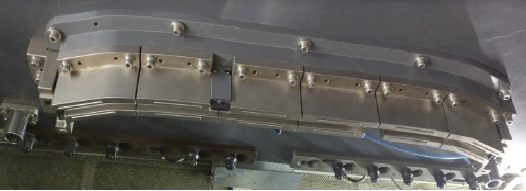
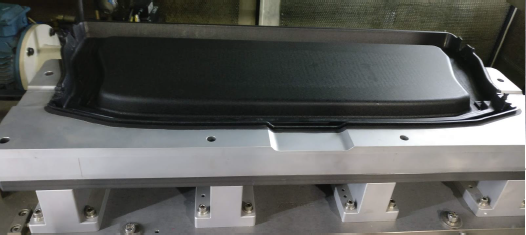
2. Oil Strainer
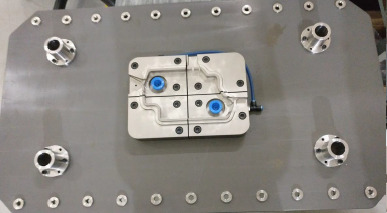

3. Fog Lamp
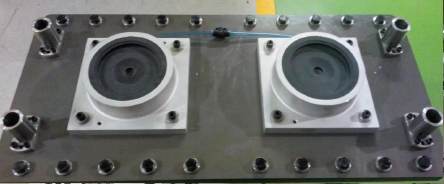

4. Fender Lamp
